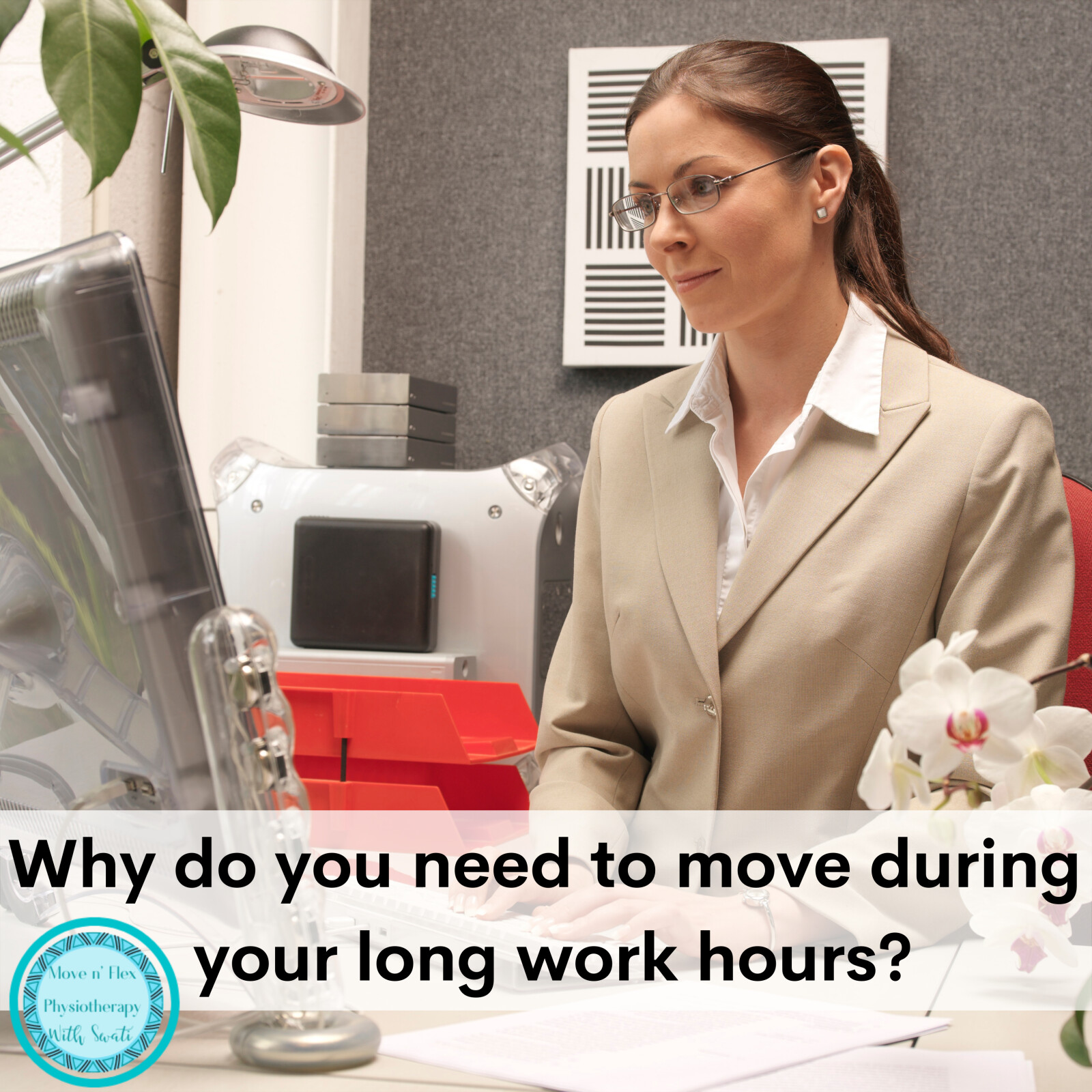
Human bodies were not made for static postures. We are meant to be move at frequent intervals throughout the day. But this has become rare as most of us have a nine to five job and some of us work even longer hours. In this blog lets discuss why do you need to move during your long work hours and how you can incorporate movement into your daily life without taking out extra time from your busy schedule.
Prolonged static sitting can lead to a poor posture as the body gradually collapses under the strain of lack of movement, leading to aches and pains in different parts of the body. Movement is important whether you are wheelchair bound, or an athlete or anywhere in between these two groups of population.
Let's look at the four main benefits of movement:
Muscles: We have more than 600 muscles in our body and they are a major contributor to stability, balance, coordination and many more important functions in the body. When we move the muscle fibre lengthen and shorten, preventing the age related loss of muscle mass, known as sarcopenia.
When our muscles are functioning at an optimal level there are lesser chances of muscular imbalances, i.e., weak or tight muscles in the body which translates to less chances of pain and discomfort in the body.
Bones: Bones are the basic framework of the body on which the muscles and ligaments are laid down and the organs are housed. Bones are made up of calcium and other minerals. As we age, the content of calcium and thus the density of bones decreases. This is known as osteoporosis or osteopenia (beginning stages of osteoporosis). When we move there is a pull on the bones which acts as a stimulus for calcium to be laid down into our bones. For those people who do not have enough movement during the day, the stimulus for calcium production decreases substantially and over a period of time it can lead to weaker bones and complications such as spinal and hip fractures.
Joints: When we move, the big joints of the body get lubricated by the fluid present within them. This is particularly important for reducing joint pain and stiffness, increasing flexibility and muscle strength in conditions such as arthritis. Movement also stimulates the production of this fluid that is needed for the optimal functioning of the joints and coordination and balance of the body.
Brain: As we age the connection between the nerves that connect different areas of the brain declines. This can manifest from forgetfulness to dementia to lack of name face association, etc. Every time we walk our brain regrows these nerve connections. It is speculated that walking 30 to 40 minutes a day, three times a week can help to grow the structures of the brain. If you are working and sitting in a chair all day long, make an effort to walk take out some time to go on a walk even if it means walking within the house or the office.
One easy way to manage lack of movement in your daily life is to move every 20 minutes when you are sitting. Your spine can take the weight of your body for 20 minutes after which the stresses on the spine begin to build up, predisposing you to the pathologies of the spine such as disk issues or spinal stenosis, etc. This obviously also depends on your physicals condition of the body and any pre existing illnesses.
So how much should we move?
If you're in a wheelchair, you can still move by doing some easy chair based exercises. If you are into sports you can get enough movement through your training. However the majority of the population lies in between this spectrum of people, that need most help with movement due to their lifestyles and poor postures.
Get your free video guide on "Quick and Easy Desk Based Exercises to avoid spinal & joint pain" HERE. These are simple and easy exercises that can be done in under 2-3 minutes while sitting at your desk at work or from the comfort of your home.
If you like this blog and want to be notified about new blogs as soon as they are published, subscribe to my mailing list below.
I would love to see you around the internet! For other places you can explore more about me: https://withswati.com/page/link
















0 Comments